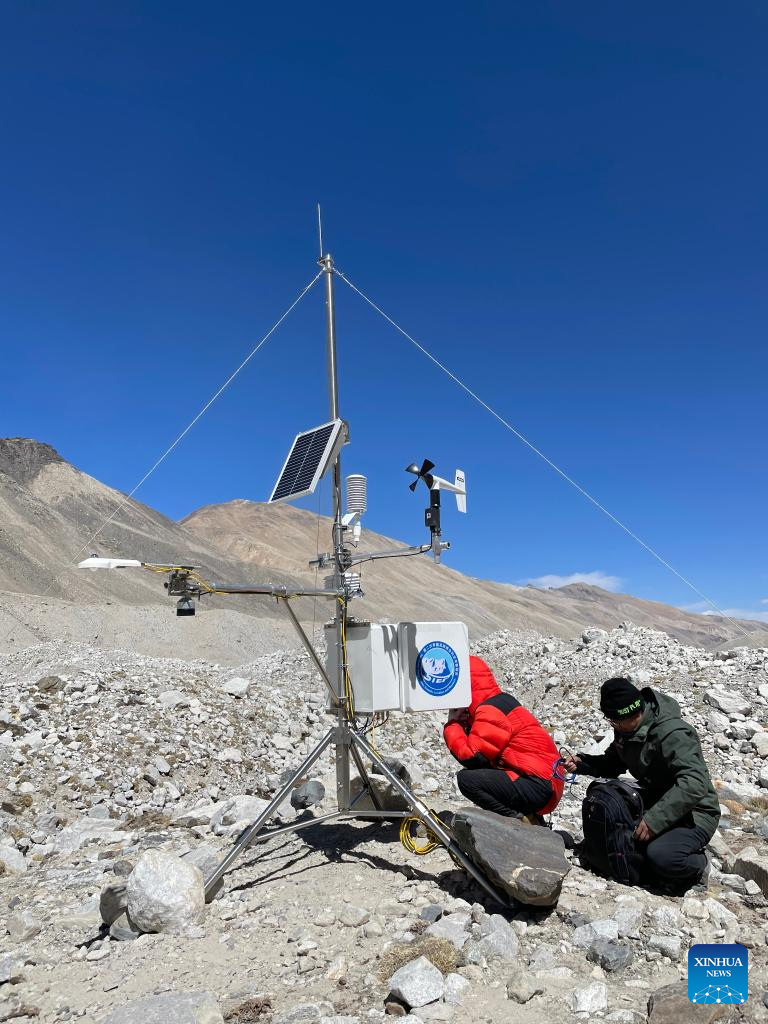
China achieved major scientific and technological breakthroughs in fields ranging from clean energy to COVID-19 treatment in the past year. Let's take a look at the key milestones.

Aerial photo taken on Dec 19 shows the Baihetan hydropower station. [Photo/Xinhua]
China builds world's largest clean energy corridor
On Dec 20, the Baihetan hydropower station, the world's second-largest in terms of total installed capacity, went fully operational in the upper section of the Yangtze River in Southwest China.
Its operation marked the completion of the world's largest clean energy corridor, where six mega hydropower stations on the Yangtze work to transmit electricity from the resource-rich west to energy-consuming regions in the east.
The hydropower station marks a big step in the country's utilization of clean energy to help realize its ambitious climate targets of peaking carbon dioxide emissions before 2030 and achieving carbon neutrality before 2060.

Aerial photo taken on Dec 1, 2021, shows nuclear power units under the China National Nuclear Corporation in Fuqing, East China's Fujian province. [Photo/Xinhua]
Hualong One reactor demonstration project fully operational
China's Hualong One demonstration project, a domestically designed third-generation nuclear reactor, has been completed and put into commercial operation, the China National Nuclear Corporation said on March 25.
The project's two nuclear power units– No 5 unit and No 6 unit are expected to generate nearly 20 billion kilowatt-hours of electricity annually, equivalent to a reduction of 6.24 million tons of standard coal consumption and 16.3 million tons of carbon dioxide emissions.
The project's completion is of great significance to the optimization of China's energy structure and the promotion of green and low-carbon development, and it will help the country achieve its carbon peaking and neutrality goals.

The Mengtian lab module docks with China's Tiangong space station combination. [Photo/Xinhua]
Tiangong space station marks key step in assembly
On Nov 3, the Mengtian lab module of China's Tiangong space station carried out a crucial transpositioning operation, marking the completion of the Chinese station's in-orbit assembly, according to the China Manned Space Agency.
During the hour-long operation that finished at 9:32 am, Mengtian was moved from an axial port of the Tiangong station's Tianhe core module to a radial port on the core module.
The lab module is about 17.9 meters long, has a diameter of 4.2 meters and weighs more than 23 metric tons. It has 32 cubic meters of inner space that can be used by astronauts. The spacecraft consists of four sections – a crew working compartment, a payload section, an airlock cabin and a service module.
There are 13 scientific cabinets inside the craft to hold scientific equipment. It also carries 37 extravehicular payload adapters capable of carrying scientific experiments needed to be exposed to the space environment, cosmic rays, vacuum, and solar winds.

The three astronauts aboard China's Shenzhou XV spaceship meet with another astronaut trio on Nov 30, 2022. [Photo/Xinhua]
Successful launches of Shenzhou XIV and Shenzhou XV; two crews gather in orbit for first time
This year, China launched two new crewed spaceships -Shenzhou XIV and Shenzhou XV respectively on June 5 and Nov 29. On Nov 30, the six Chinese astronauts from the two missions marked a historic moment as they met inside the country's Tiangong space station.
It was the first time that six Chinese were in a space station at the same time and the first in-orbit gathering of two Chinese crews.
After accomplishing many "firsts" during their six-month space station mission, three Chinese astronauts on board the Shenzhou XIV manned spaceship returned to Earth safely on Dec 4. The Shenzhou XV astronauts are scheduled to stay in orbit for six months to carry out a number of assignments.

Photo taken on April 24, 2022, shows an automatic meteorological station set up at an altitude of about 5,200 meters on Mount Qomolangma. [Photo/Xinhua]
World's highest automatic weather station set up on Mount Qomolangma
On May 4, Chinese scientific researchers established an automatic meteorological monitoring station at an altitude of over 8,800 meters, making it the world's highest of its kind, on Mount Qomolangma, known in the West as Mount Everest, on the China-Nepal border.
It has replaced the station sitting at an altitude of 8,430 meters on the south side of the mountain, set up by British and US scientists in 2019, to become the world's highest.

86-10-68597521 (day)
86-10-68597289 (night)

52 Sanlihe Rd., Xicheng District,
Beijing, China (100864)

